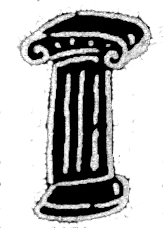How to Write a Children's Book
Panzil. How did I think of that?
I can blame my late friend, David Gordon, who coaxed me into writing a children's book. He was a graphic designer and he let me use his back office and his dining room during a dark time in my life, a time when one of my children was suffering from a debilitating illness that was worsening. One afternoon, as I was at the keyboard trying to write about deeply troubled patients, David put his hand on my shoulder and said, "Why don't you write a children's book? Something I could illustrate.
Here I was, a psychiatrist past my twentieth year in practice, a would-be want-to-be writer, but the idea hung in the air like a fly that suddenly rushes past you, then flies out of sight.Days later, as the fly was buzzing around me, I thought about the horror movies I liked to watch as a boy, shielding my eyes with nervous, cupped hands. All of those films were about creatures, werewolves and gorilla women and Frankenstein and Dracula and the invisible man. All of them secretly yearning to be rendered good somehow, to be rescued.
Of course, I identified with all of them. One of the struggles of my childhood, probably the main one, was defining who I was and who I was going to be when-I-grow-up. Every child's task is to achieve a sense of self, the person it first begins to recognize through what Lacan called the Mirror Stage. Soon it accrues the qualities assigned by others — I was shy, quiet, regimented, dreamy, fearful, smart. So I was told. And hanging all through my childhood was some future self which I could not identify. I wanted to be a writer because I loved books. Not so much that I loved to write but that I liked the idea of being a writer of books.
My father's dream for me, doubtless the fulfillment of his dream for himself, was for me to be a doctor. He was quite vocal about that, though never insistent, always subtle. He believed I had all of the qualifications to become a doctor, that I was a doctor incarnate.
So here I was years later, a few years after his death, a doctor, And I was writing a children's book.
"He will live according to principles of being and doing good."
I thought up a little character, a young dragon, born to be bad, but who tries to undo his heritage. He will rescue himself, even defy his parents and all he came from. The image of this young dragon came to me with a pre-determined name, the Yiddishy-sounding Panzil. That name rang out to me like a call from some Transylvanian swamp. A place where dragons might dwell. A dark, dank fen.David loved the idea and the name. He immediately began sketching.
The thrust of the story became Panzil's efforts to throw off the burden of evil deeds and evil intent and the fierce dragon powers that for centuries personified hellish intent. Panzil, though, is naturally good perhaps because he is young. But also because, seeing all the old destructive power of dragons now seriously out-moded, he is determined to reverse all that. He will live according to principles of being and doing good. He will go out into the world to liberate himself.
Panzil required some library research to discover the myriad of characteristics that cling to the concept of a dragon. Dragon history is ancient, multicultural, and, at times, seemingly credible. A dragon is a lurking, lone predator often guarding some treasure or holding a hostage like some mercenary devil.Our first draft, despite the truly inspired illustrations, did not read quite right. The text required a few editorial consultations to give it a voice that speaks to children. Having gleefully turned out the first book, David and I envisioned a series of sequels — how Panzil might save Christmas from climate change; how Panzil could protect endangered species; how Panzil could restore the balance of available water supply. And each episode would serve as Panzil's lesson to children.Panzil, the do-good little dragon.

